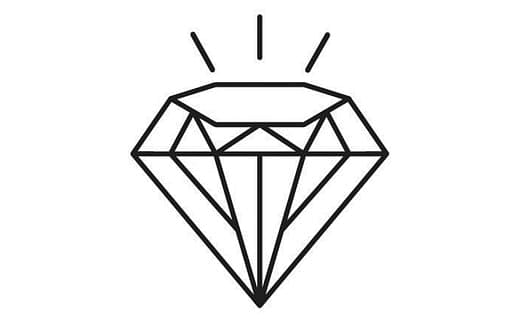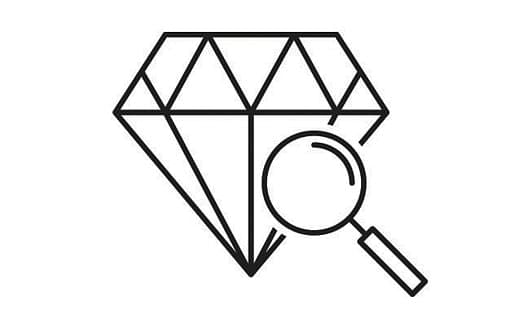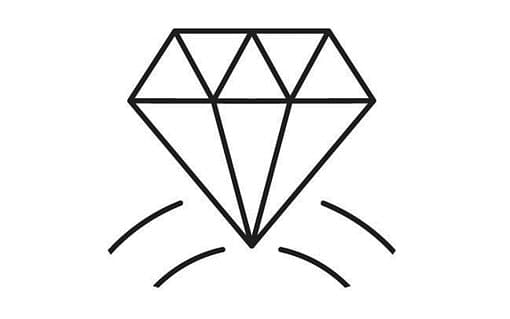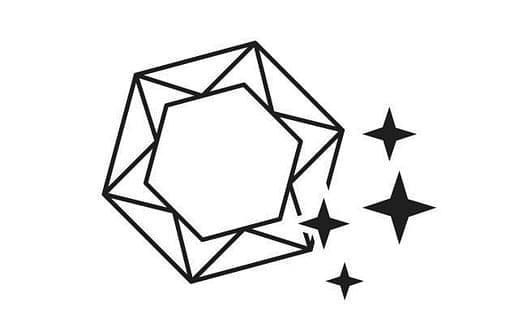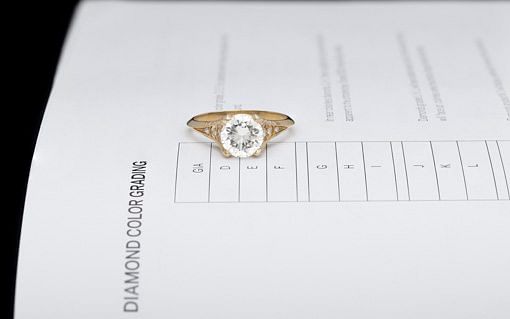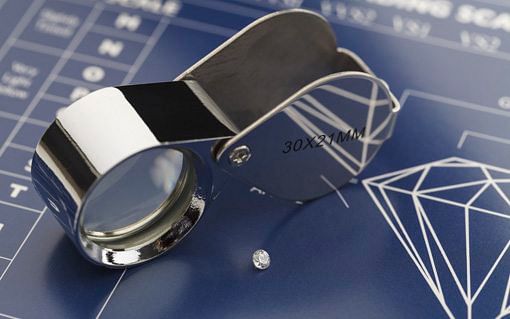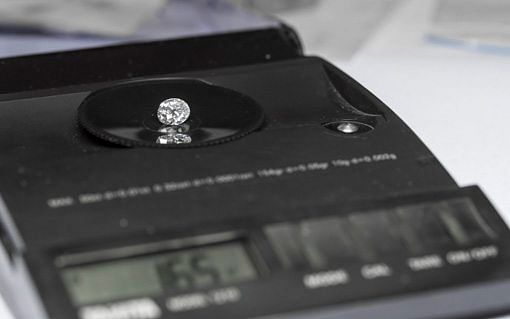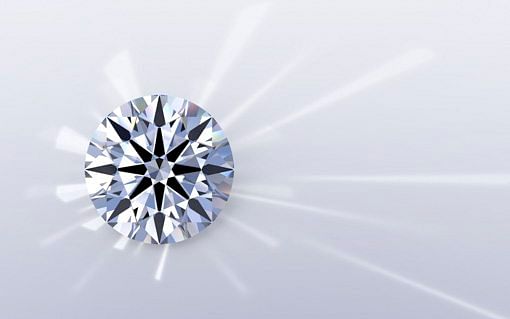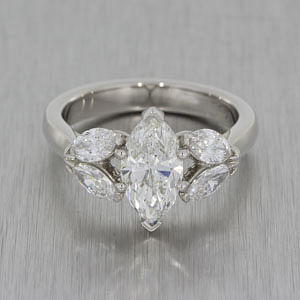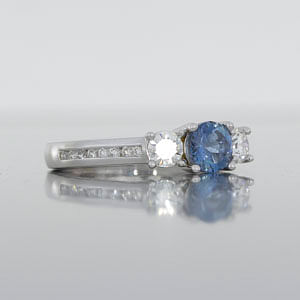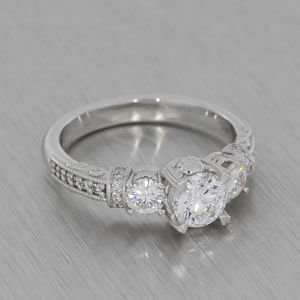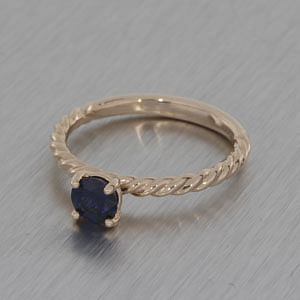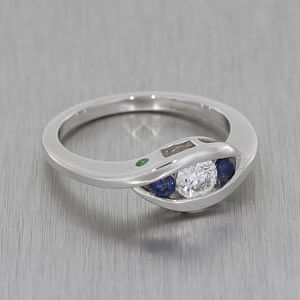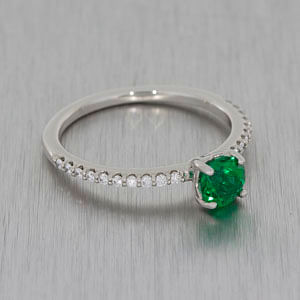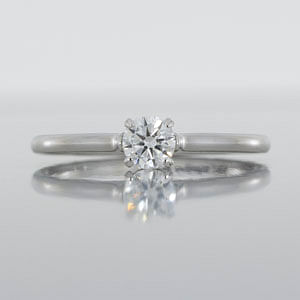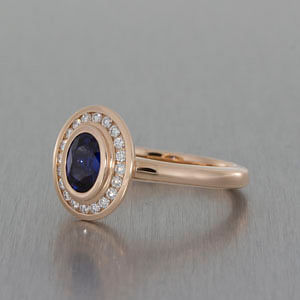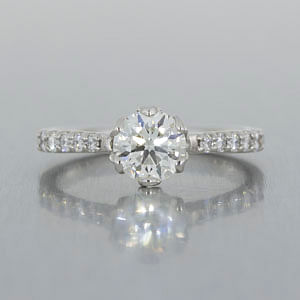Understanding the past in order to re-shape the future of diamond knowledge
What are the Four C’s?
Up until the Mid-Twentieth Century, there was no universally agreed upon system for assessing diamond standards. It was then that the Gemological Institute of America (G.I.A) created the ‘Diamond 4C’s and the International Diamond Grading System’.
This was primarily created so that miners and polishers would have a common framework of language and understanding when trading diamonds.
The 4 C’s the G.I.A created are;
Changing The Narrative
Over time, the 4C’s discourse has dominated the socio-cultural landscape of diamond shopping, which has begun to feel somewhat stale and archaic when assisting a contemporary client with their forever diamond investment.
With innovative advances in technology surrounding jewellery design software combined with the rise in interest in lab grown diamonds and raw/ flawed stones, we feel it may be time to update the narrative from the 4 C’s to that of a more client-focused, human centric discussion perspective.
Crafted by Infinity a diamond cutting house based in Antwerp has gone as far as suggesting substituting the 4 C’s entirely with their 4B’s: “Brighter, Bigger, Bolder and more Beautiful.” The most significant focus should be placed upon a stone’s cut grade, that allows for a 4:1 investment that results in “More Fire, More Sparkle, and More Life!”
We at Durham Rose occupy a more neutral middle ground; we are more than happy to discuss your diamond in the vernacular the GIA have created, but find that most clients simply want to know;
- Is it Beautiful?
- Is it Affordable?
- Is it Ethical?
We often lead a new client with these design questions at the centre of our discussions, ensuring the clients have both the technical knowledge they should expect from a high-quality jeweller, complimented with the personal, human touch of a bespoke customer experience.
→ Return to Top
Colour
Colour is graded using an alphabetical scale from D (Colourless) to Z (Faint Yellow).
A diamond colour is measured under laboratory conditions, first placing the diamond upside down and observing the colour visible through the pavilion. This is because when viewed through the table the brilliance of a diamond can hide its colour.
You can spend more on a diamond with a particularly good colour but the difference between Colourless and Near Colourless diamonds is generally difficult to detect in everyday life. For engagement rings we recommend diamonds with a grading from D-G in colour.
Fancy coloured diamonds
Fancy diamond colours range from blue to brilliant yellow, red, brown, pale green, pink, and violet. Because of they’re the rarity, coloured diamonds are highly desirable and often more valuable.
→ Return to Top
Clarity
All diamonds have naturally occurring inclusions (internal imperfections) and blemishes (surface imperfections). Diamond clarity is assessed by trained graders and under 10x magnification, recording visible inclusions from F (Flawless/ no visible inclusions) to I (Included/ obvious inclusions).
The term ‘eye clean’ refers to whether the inclusions are visible to the naked eye (without magnification). Diamonds which are eye clean can offer excellent value as the inclusions which make the difference between an eye clean SI1 and an FL are not visible to the naked eye.
How you prioritise clarity when selecting your diamond can be influenced by the shape and type of diamond you are looking for. Brilliant cut diamonds have lots of facets and internal mirrors which can be excellent at masking the appearance of inclusions whereas emerald cut diamonds have long, wide facets which act like windows and any inclusions in the stone can be easily visible.
- Flawless (FL) – No inclusions or blemishes are visible to a skilled grader using 10× magnification
- Internally Flawless (IF) – No inclusions and only blemishes are visible to a skilled grader using 10× magnification
- Very, Very Slightly Included (VVS1 and VVS2) – Inclusions are difficult for a skilled grader to see under 10× magnification
- Very Slightly Included (VS1 and VS2) – Inclusions are minor and range from difficult to somewhat easy for a skilled grader to see under 10x magnification
- Slightly Included (SI1 and SI2) – Inclusions are noticeable to a skilled grader under 10x magnification
- Included (I1, I2, and I3) – Inclusions are obvious under 10× magnification and may affect transparency and brilliance
→ Return to Top
Carat
Carat is the unit of weight used to assess diamonds. There are 200 milligrams in a carat.
Carat weight is observed through the size of the diamond, for example, the diameter of a 1ct round brilliant cut diamond is around 6.5mm. The appearance of diamond size will also be influenced by the shape and cut proportions. For example, a round brilliant diamond that is very deep will have a smaller diameter than a round brilliant with good proportions (and it won’t sparkle like a well cut diamond should). Conversely, a 1ct oval cut diamond will often look larger than round brilliant cut diamonds of exactly the same carat weight because of the spread.
Generally larger diamonds are rarer and therefore have a higher cost per carat. However, the two diamonds of equal size can vary significantly in value depending on the other three Cs.
If you need any further information on any of The Four C’s or Diamond Carat Weight knowledge; get in touch with one of our consultants, who are more than willing and ready to help.
→ Return to Top
Cut
In their rough and untouched form diamonds look a little like sugar lumps and it is the skill and expertise of diamond cutters that unveils the beauty within. The joy or disappointment experienced when looking at your diamond can be a direct result of just how expertly it was cut. Cut is graded from Ideal/ Excellent to Poor with slight variations in terminology across the main grading houses.
An Excellent cut diamond will be fashioned so that it’s proportions, symmetry and polish result in superb brilliance, fire and sparkle.
The crystal structure of a diamond can be thought of like a series of compound mirrors. When you look at a diamond that has been cut to the correct proportions and angles, light that enters the diamond through critical angels will be bounced around within the stone and will reflect back out toward your eye. Light reflected in short spectral fans will be seen as white light and wide spectral fans will be seen as flashes of colour. Light which is not reflected back out towards your eye is called leakage and will cause a diamond to appear dark. Symmetry and polish are the finish factors which contribute to how successfully a cut will result in excellent light performance.
The AGS has the most stringent criteria for assessing cut grade. Further still, fine makes of diamonds use cutting edge technology and research to create the highest performing diamond cuts available, read more about Crafted By Infinity diamonds here<LINK>.
A round brilliant diamond always has either 57 or 58 facets depending on if the culet has been faceted or is left as a point. The large flat area on the top of the diamond is called the Table, you also have the crown which is the top angled section, this is then split from the lower half of the diamond called the girdle. The lower half of the diamond is called the pavilion. The relationships between the table, crown angle and pavilion angle are the points which give us light performance. See more about the Anatomy of a diamond here.
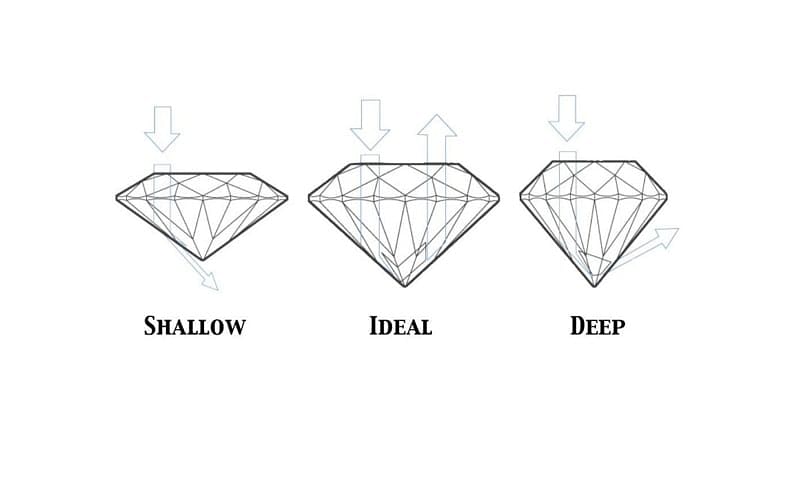
To explain further, Brightness refers to the combination of the white light reflected from the surface and inside surfaces of the diamond. Fire refers to the dispersion of white light into the spectral colours, this is why you would see colours of the rainbow reflected back to you. Scintillation refers to the pattern of light and dark areas you see when the diamond, the light or the observer moves.
The specific cut proportions and angles play a dramatic part in how the light performs when it strikes a diamond. When light strikes a diamond it either reflects off the surface; if it reflects back the viewer would see it as a flash of white light which would be part of the brilliance of the diamond. If the light enters the diamond it slows down and could change direction which means it is refracted. The light ray could then strike an interior surface and either continue being reflected off the inside surfaces and back or it will exit the diamond straight away. If the light reflects throughout the diamond and back up some of it could disperse into the spectral colours (fire) and others will reflect as white light. The way these factors work with each other and ‘sparkle’ when the diamond, light source or viewer moves is the scintillation and overall brilliance of the diamond. The measure of the speed at which the light enters the diamond and bends is called the refractive index.
Why Is Cut Grade Important?
We at Durham Rose, are continually challenging what is considered the ‘best’ cut for each individual stone and client, which is why we are now exclusively providing our clients with Crafted by Infinity diamonds. They specialise in the highest possible precision cut diamonds that surpass the G.I.A ’s broad scope of ‘excellent’.
Diamond values, in today’s climate, are heavily based on the traditional 4 C’s with significant emphasis being weighted upon carat weight and colour. However, with the advancing knowledge surrounding cut-awareness and grading, the future value of a diamond will evolve to become based on new cut-criteria, which we at Durham Rose firmly believe should have far more prominence in the equation.

We feel that after speaking to a professional about this topic, as well as the other ‘C’s’, you will come away with a far less conflicted opinion and feel confident in your diamond decision.
While it is important to consider many components when assessing the cut grade appearance and quality of a diamond, your personal preference plays the most important role.
→ Return to Top
AS SEEN IN





